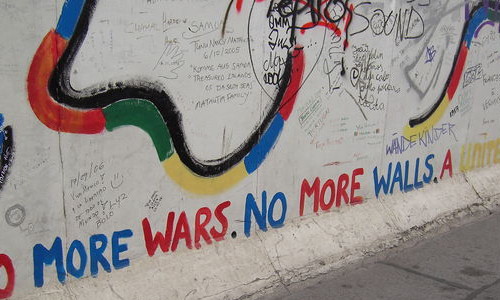Around Europe in 40 years: Now and then
Most people travelling this year will take easy intra-European travel for granted. No visa required, just a ticket; for just over £300 a young person can buy a train ticket that allows them in and out of almost every country on the continent.
It wasn’t always the way. In 1973, when the illustrious Boar was founded, there was no EU travel laws and no Schengen Agreement to make border crossings smoother. Some countries in Europe were off limits to travellers from the UK. So where should intrepid Boar travellers venture to this year that our predecessors couldn’t?
1) Dubrovnik, Croatia
In the last ten years, Croatia has become a top destination for both city and beach junkies. From sports teams on tour to history buffs, young people stream from the UK to Dubrovnik or Split every summer. Even the King’s Landing set in Game of Thrones is Dubrovnik’s coast! But as recently as the early 1990s, Croatia was embroiled in a tragically violent War of Independence as the former Yugoslavia broke up into the many countries that now make up Eastern Europe. The war was characterised by violent sieges, battles, and horrific ethnic cleansing. Tourism to Croatia has been instrumental in the rebuilding of its economy and its perception of itself as an independent nation; and, of course, the sun-baked orange roofs of Dubrovnik are one of Europe’s most beautiful sights.
2) Prague, Czech Republic
Now considered one of the most beautiful cities in Europe and a must-stop on any back-packer’s itinerary, Prague’s long and culturally rich history was overshadowed by Communism in the 1970s. At the height of the nation’s period of ‘normalisation’, any signs of opposition to the regime were persecuted with violence. While Prague wasn’t completely out of bounds, it was considered one of the more dangerous places for young people from Western Europe to travel to. Only four year’s prior to the Boar’s foundation by Warwick students, a Charles University student in Prague committed suicide in Wenceslas Square, setting fire to himself in protest.
3) Berlin, Germany
In 1973 the Berlin Wall was still 16 years away from destruction. Travel from one side of the Berlin to the other was, in the vast majority of cases, impossible, and the city existed in the shadow of one of Europe’s greatest symbols of Cold War fear. Every Cold War superpower had nuclear weapons with Berlin in their range: not the ideal atmosphere for a weekend break. Today, Berlin is easy to get to and cheap to stay in, and maintains its status as a young tourist’s favourite for its mixture of stunning architecture and thriving nightlife.
Berlin, Prague and Dubrovnik are just three highlights of a Europe that would have been difficult for this paper’s founders to cover for their Travel section. As today’s young travel writers, we are incredibly fortunate to have the access to Europe that we do. From East to West, North to South, don’t overlook the beautiful and diverse continent just across the ocean.

Comments